Hexaplane Structurist Relief No. 2 (Arctic series) 1995–98
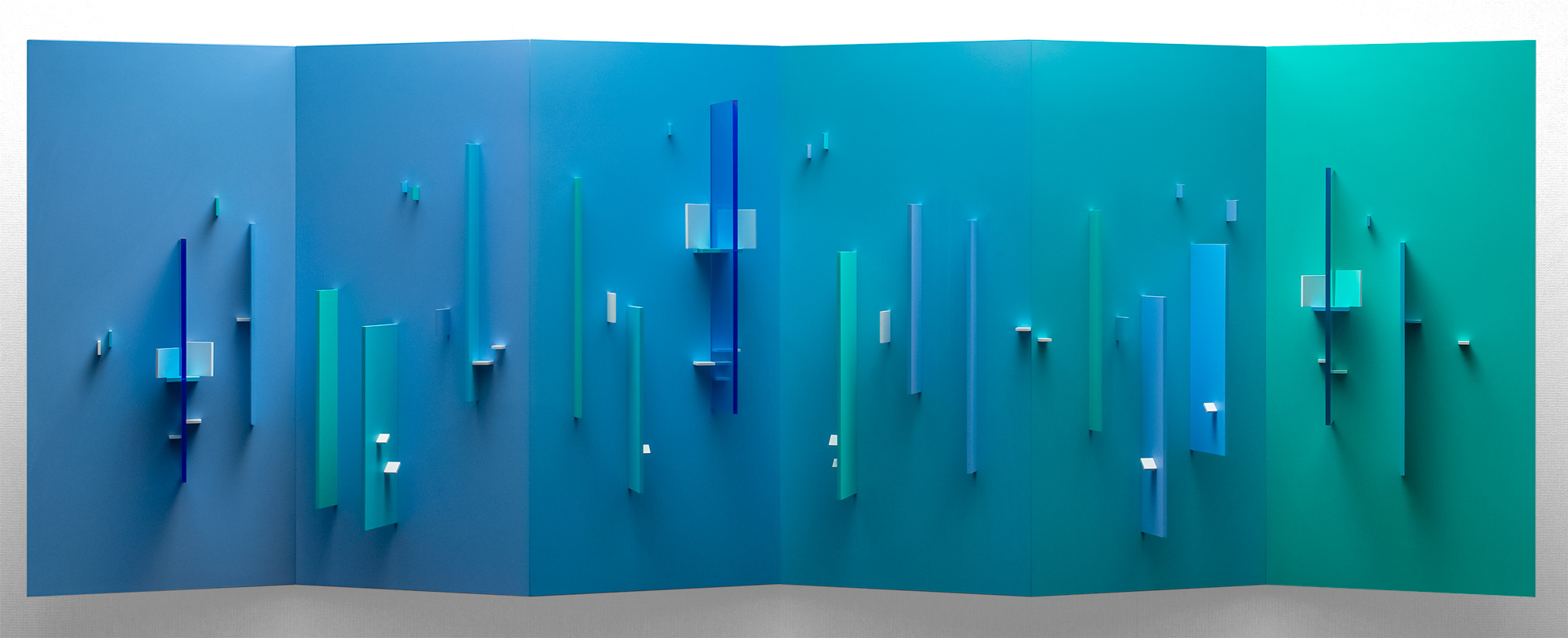
Eli Bornstein, Hexaplane Structurist Relief No. 2 (Arctic Series), 1995–98
Acrylic enamel on aluminum and Plexiglas, 67.2 x 182.2 x 15.9 cm
University of Saskatchewan, Saskatoon
The iconic Icebergs, Davis Strait, 1930, by Lawren S. Harris (1885–1970) dates to when he and A.Y. Jackson (1882–1974) travelled the Arctic in the summer of 1930. Yet it is as if Harris and Bornstein—even though they were separated by over half a century—saw their northern visions with shared eyes. There is kinship here, a spiritual resonance between the two artists’ respective interpretations of the icy landscape, although they came from different moments in twentieth-century modernist art history. The cold palette of both registers the same iridescence, brittleness, limpidity, and silence that is true to their northern subject matter.
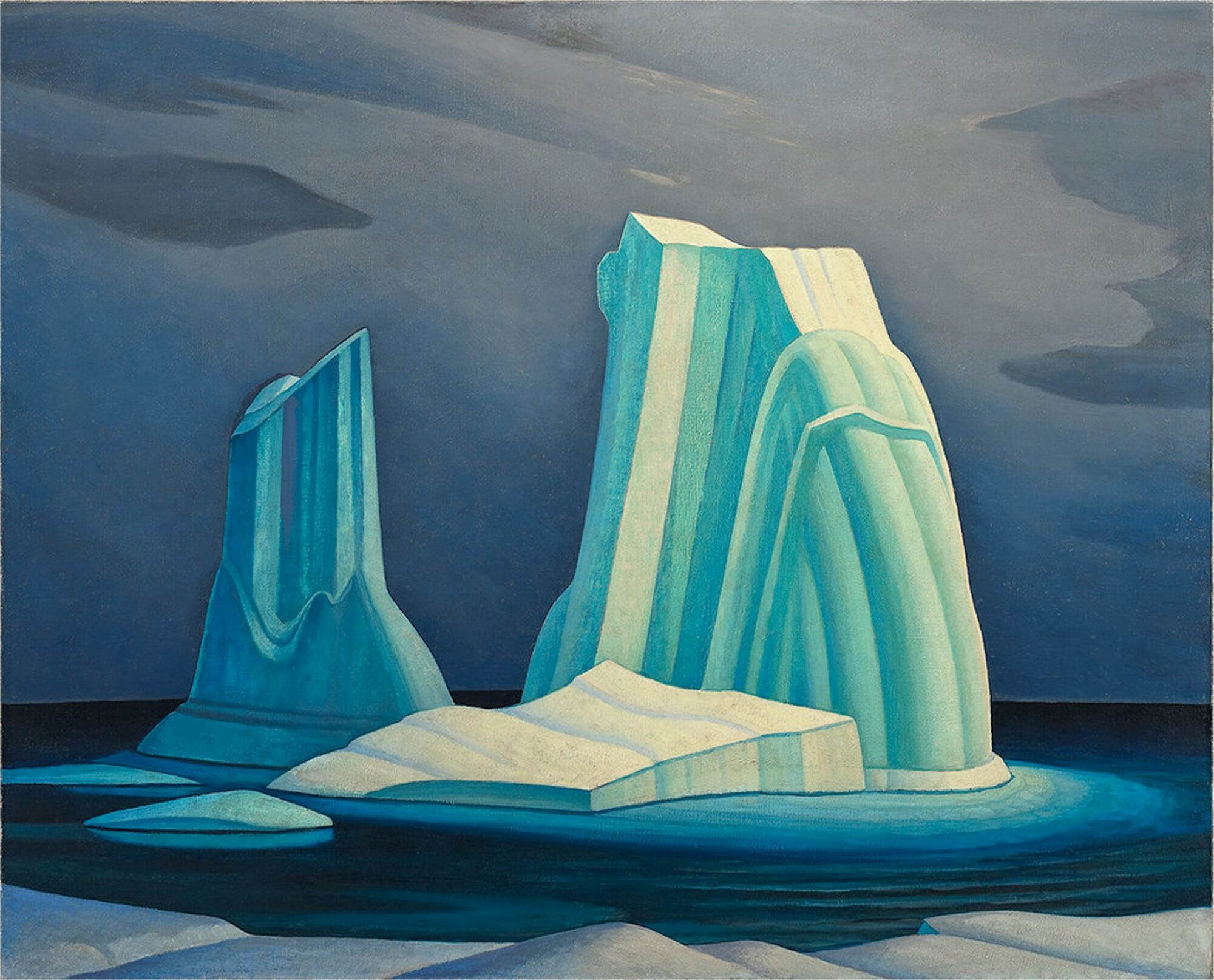
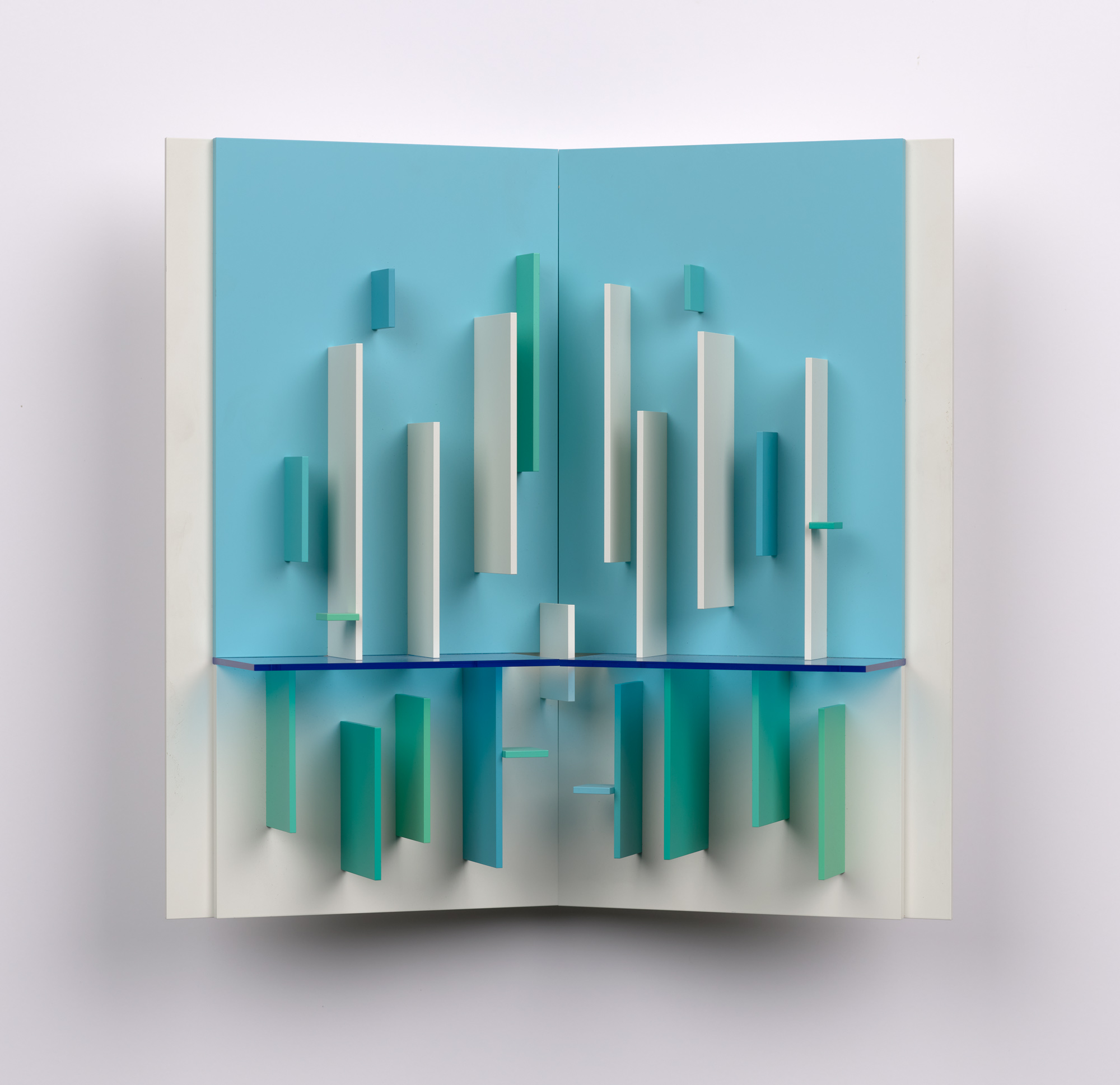
The Arctic Series reliefs were developed by Bornstein between 1986 and 1998 as a response to his profound experiences in the Arctic. Hexaplane Structurist Relief No. 2 (Arctic Series), with its expressive use of transparent blue Plexiglas, is the grandest of Bornstein’s Arctic Series reliefs. The idea to use translucent coloured Plexiglas had occurred to him already on his second day in Ellesmere Island, July 26, 1986. As he explained, the thought came to him when he was struck by the sight of how icebergs reflected in water produced mirror images. The effect of inserting transparent coloured Plexiglas in the midst of the enamel-painted relief parts would not only add an additional quality of colour to the latter’s space and forms but would also reflect them with a new depth. Blue Plexiglas intensified the sensation of iciness in the relief’s already cold palette.
Though the Northern work of Harris and Bornstein has much in common, there are also differences. The objective of Harris’s Icebergs, Davis Strait was to convey spiritual illumination, as the artist phrased it, the soul’s “simple vision of high things.” Harris was a keen observer of nature, but his goal was to transcend mere appearances, marshalling Art Deco–influenced stylizations to distill nature into archetypal icons. Where Harris idealizes, in awe of nature’s eternities, Bornstein moves up close, like a naturalist, to root his work in an intimate study of nature’s ever-changing processes. His six zigzagging background planes in Hexaplane Structurist Relief No. 2 may intimate something enormous and timeless, but simultaneously he recreates for the viewer a sense of close scrutiny: the feeling of being there on the ground as if at the first moment of discovery.

 About the Author
About the Author
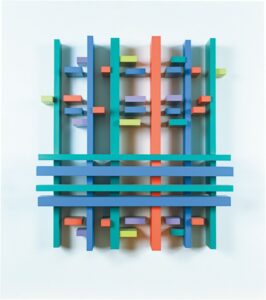 More Online Art Books
More Online Art Books
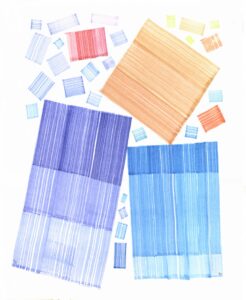 Acknowledgements
Acknowledgements